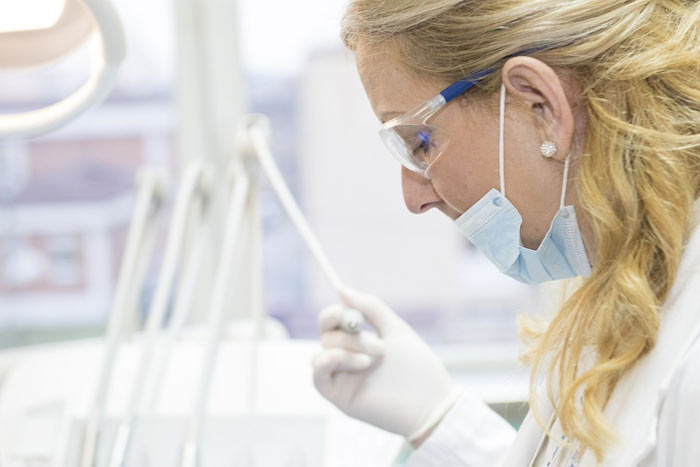We are convinced that almost every woman has heard about thread facelift if she is anxious about preserving her beauty and youth. The editors of Geniusbeauty.com answer the most popular questions about the sensational anti-aging procedure. Read more in our article!
 Thread facelift is not plastic surgery
Thread facelift is not plastic surgery
Threads are divided into surgical and cosmetic. Accordingly, the insertion of surgical threads is performed by surgeons, as a rule, under general anesthesia or a powerful painkiller. These threads are inserted and sewn to certain structures on the face, head and body, in particular, to the muscles. Although it sounds scary, there is an alternative – absorbable sutures.
Beauticians work in the subcutaneous fat layer. Accordingly, cosmetic threads are most often absorbable: their shelf life is the maximum of two to three years. Because of the ease of insertion and minimal damage to the skin, absorbable sutures are the best option. In addition, the procedure does not require surgical intervention, which is a definite plus for a woman who needs correction for the first time.
Absorbable sutures have a definite plus: they are usually made from caprolactone, in other words, from lactic acid. Besides the fact that such threads lift the face, they are hypoallergenic, and they give the effect of biorevitalization in the upper layers of the epidermis. Lactic acid provokes a powerful production of collagen, which is the first step in combating the signs of aging.

The first classification has been explained. The effect of threads also differs: smooth mesothreads are used to strengthen a certain place, for example, the zones of nasolabial folds or wrinkles in the corners of the eyes, and threads with notches are just responsible for the magical lifting effect. Smooth threads eventually overgrow with collagen and elastin fibers, and the skin in the places of their installation becomes smooth and healthy, mimic wrinkles disappear: they can be used starting from 25 years.
Inserted by a beautician in the adipose tissue, threads with notches lift the face in the necessary direction: they are usually used from the age of 35, although everything must be prescribed by the doctor.
Are threads an absolute panacea?
Threads really solve many problems easily and eliminate the first age changes. For example, they improve the quality of the skin, strengthen the ligaments and prevent sagging of the facial contours. However, not all women will benefit from this option of anti-aging correction, so the decision about installation should be taken only after consulting a cosmetologist.
However, by the age of 40, a lot of women experience loosening of facial ligaments, with ptosis in different areas of the face, so threads can solve the problems of many women, but the installation area and the required number of them will vary.
Who and when
At the age of 25, some minimal age-related changes already begin: in fact, the aging of the skin begins at the age of 20, therefore from this age you can already insert small thin mesothreads to strengthen a specific zone. Each woman has her own type of aging, but the most exposed area is the face, which an experienced cosmetologist can easily understand at a young age. The best option is to strengthen the problematic place with smooth mesothreads in order to delay the appearance of further age signs as much as possible.
The average age of women getting threads is 40 years.
If women used to come to a plastic surgery at the age of 45–50 years, thanks to the thread facelift, the time to turn to a surgeon can be significantly delayed.

However, threads with notches are used at a younger age with a pronounced deformation type of aging: when the girl needs to rid of fat in the lower part of her face and insert threads for the sake of prevention. Women with a deformation type of aging should work on their oval shape of the face at a young enough age to look good ten or fifteen years later.
When a patient with a problem face does nothing and comes to the doctor at the age of 45-50 years, and the lines are already so loose that the threads will not help, the doctor sends her to a plastic surgeon, and this is a much more serious intervention.
Can I insert threads without preparing the skin?
Yes, you can. However, inserting threads without preliminary preparation of the skin is possible only if the skin is in perfect condition: tight, ready for the insertion of threads, saturated and straightened. In many ways, the good condition of the epidermis is a merit of genetics or proper care and preparation: a course of mesotherapy or hardware cosmetology contribute to tightening the upper layer. This skin is ideal for inserting threads, and the result of the procedure will be just great.
Let us turn to a less optimistic, but more common variant: a woman has loose, dull skin that is not ready for the insertion of threads, and at the same time the patient wants to insert the threads here and now. A conscientious cosmetologist will immediately refuse and offer to prepare the skin for this procedure: for example, do a revitalization procedure or undergo two or three sessions of cosmetology. When a professional insists on the need for additional procedures before insertion, most often it is a necessity rather than a desire to get more money out of the patient.

If the doctor prescribes you the necessary medications and you prefer to take only one of them, do you think you will get cured quickly? That’s the same about cosmetology!
The cost issue
The cost of inserting threads can only be determined after visiting a cosmetologist: it all depends on the length of the thread, on the zone, the type of aging and the quality of the skin. To achieve the result, one patient needs a small number of threads, so the procedure will be cheaper. For another patient, the same area may require a lot of threads, and the threads are difficult to insert, which means that rehabilitation will be more difficult. For example, bruises may appear and the cost will be higher. There is a “hammock” technique, which is used to support the lower part of the face and eliminate the second chin. It is more expensive, requires a lot of threads, and the doctor’s hard work.










